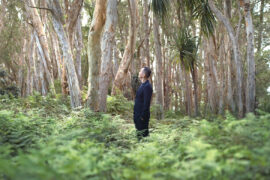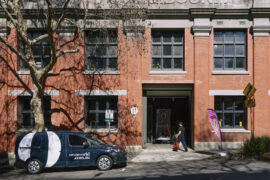Geoff Isaac’s book provides industrial designers and manufacturers with the knowledge needed for a transition to sustainable material choices.

March 20th, 2025
Questions of sustainability are, of course, the talk of the design industry in an age of climate crisis. What is needed in order to make the discourse in any sense meaningful, however, is knowledge and insight to make effective change. As a University of Technology, Sydney (UTS) Research Fellow and Australian National University casual academic, Geoff Isaac has written a newly released book that aims to do exactly that, providing a rigorous guide for designers and new materials needed for a sustainable transition.
In particular, Rethinking Plastics in Product Design: A Guide to Sustainable Transitions for the Environmental Emergency focuses on the health and environmental impacts of plastics. The book has been written with professionals engaged in designing and manufacturing consumer goods that incorporate plastics in mind, acting as both a call to action and an informative guide. The reasons for extensive use of plastic are clear, but Rethinking Plastics is for responsibly minded designers who wish to transition to the use of sustainable materials.


“The ideal plastic of the future will be produced using renewable energy, sourced from sustainable materials such as algae or CO2, and strengthened with bio-based pigments and additives,” says Isaac. “While these materials remain rare, viable alternatives already exist, and design must accelerate the transition toward their adoption. With much attention being directed to increasing the supply of renewable plastics, design needs to take a lead in driving demand for these materials.”
The book focuses on chairs in particular, based on an understanding that their ubiquity allows them to feature as something of a case study in product design. As an introductory chapter explains, “The study of plastic chairs offers a lens through which to understand the impact of technology and materials on design and the wider cultural and social implications of our relationship with plastic over time.”
Related: Climate crisis informs this graphic novel

Early chapters then provide the contextual backstory of our excessive plastic usage, before moving on to sections including ‘Identifying environmentally responsible products’, ‘The agency of design’ and ‘Specifying renewable carbon-based plastics’.
Isaac then concludes with guiding principles such as dematerialisation, avoiding virgin plastics, designing for longevity and circularity, and promoting the provenance of renewable plastics. Noting that the “[r]apid expansion of plastic production is driven by the relentless pursuit of profits to offset the impact of declining demand for oil,” he concludes the book with the thought that design “should be a futuring agent of change […] and can play a transformative role in shaping a more sustainable and forward-looking future.”
Rethinking Plastics in Product Design: A Guide to Sustainable Transitions for the Environmental Emergency is available for purchase from Bloomsbury Academic.




Home Truth by Breathe is the 2024 NGV Architecture Commission
INDESIGN is on instagram
Follow @indesignlive
A searchable and comprehensive guide for specifying leading products and their suppliers
Keep up to date with the latest and greatest from our industry BFF's!

The undeniable thread connecting Herman Miller and Knoll’s design legacies across the decades now finds its profound physical embodiment at MillerKnoll’s new Design Yard Archives.

Auckland Design Week returns for its third edition in March, unveiling an expanded programme and a renewed focus on the relationship between people, communities and the places they shape.

In Naturalizing Architecture, Takada moves beyond biomimicry to propose a regenerative vision for the urban environment.
The internet never sleeps! Here's the stuff you might have missed

A new book documents the city’s historic building interiors, from 1800s coffee palaces to post-war modernist spaces.

BVN’s Sirius Redevelopment has been named one of two joint winners of The Building category at the INDE.Awards 2025. Celebrated alongside Central Station by Woods Bagot and John McAslan + Partners, the project reimagines an iconic Brutalist landmark through a design approach that retains heritage while creating a vibrant, sustainable future for Sydney.

ownworld unveiled Silent Beams in its Collingwood showroom, marking the arrival of Swedish lighting brand Wästberg through a new partnership with Euroluce.

Recognised as a winner at the INDE.Awards 2025, Barton Taylor has received The Photographer – Residential accolade. His photographic work on Cake House captures the soul of a coastal icon reimagined, blending light, texture and atmosphere into a compelling visual narrative.